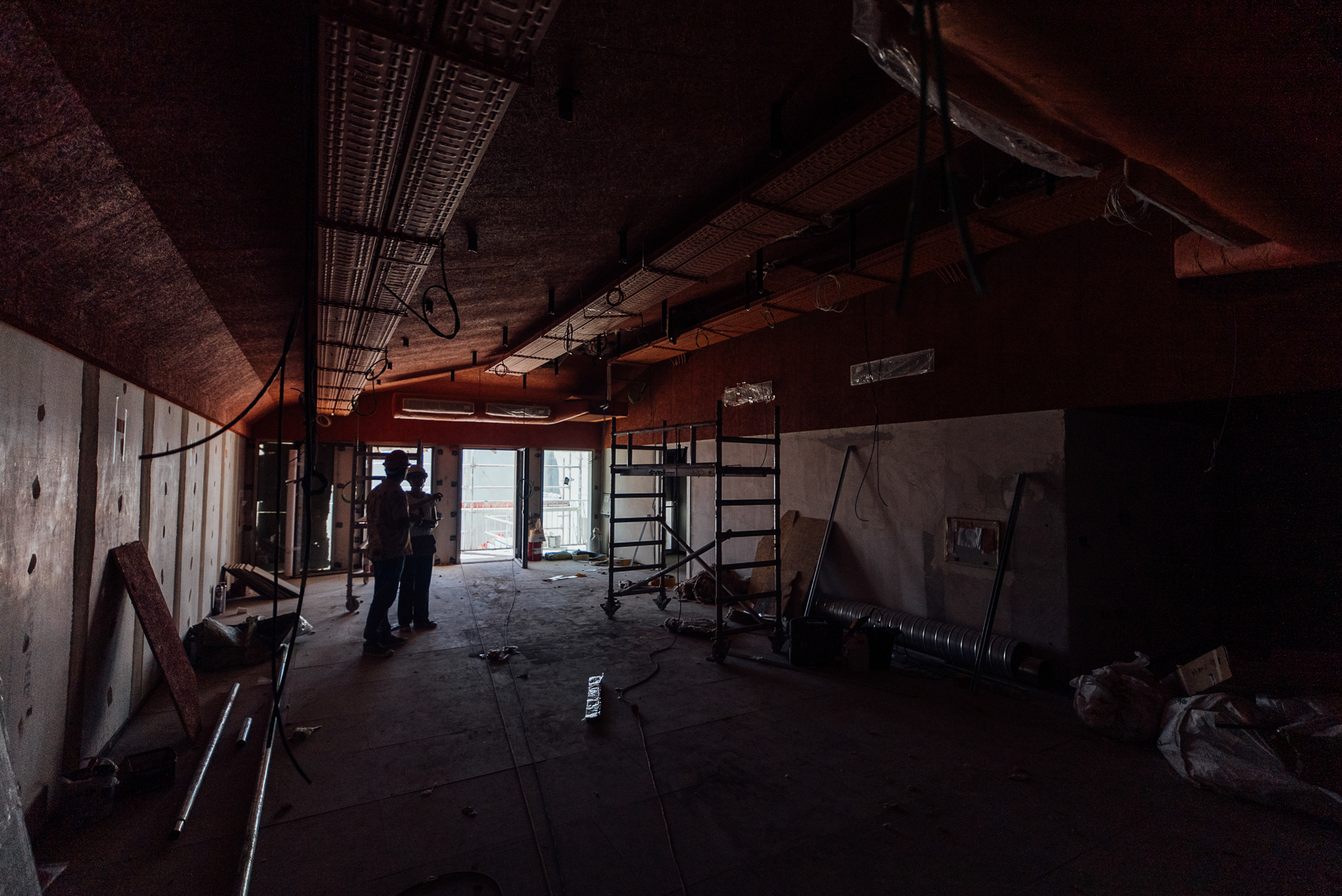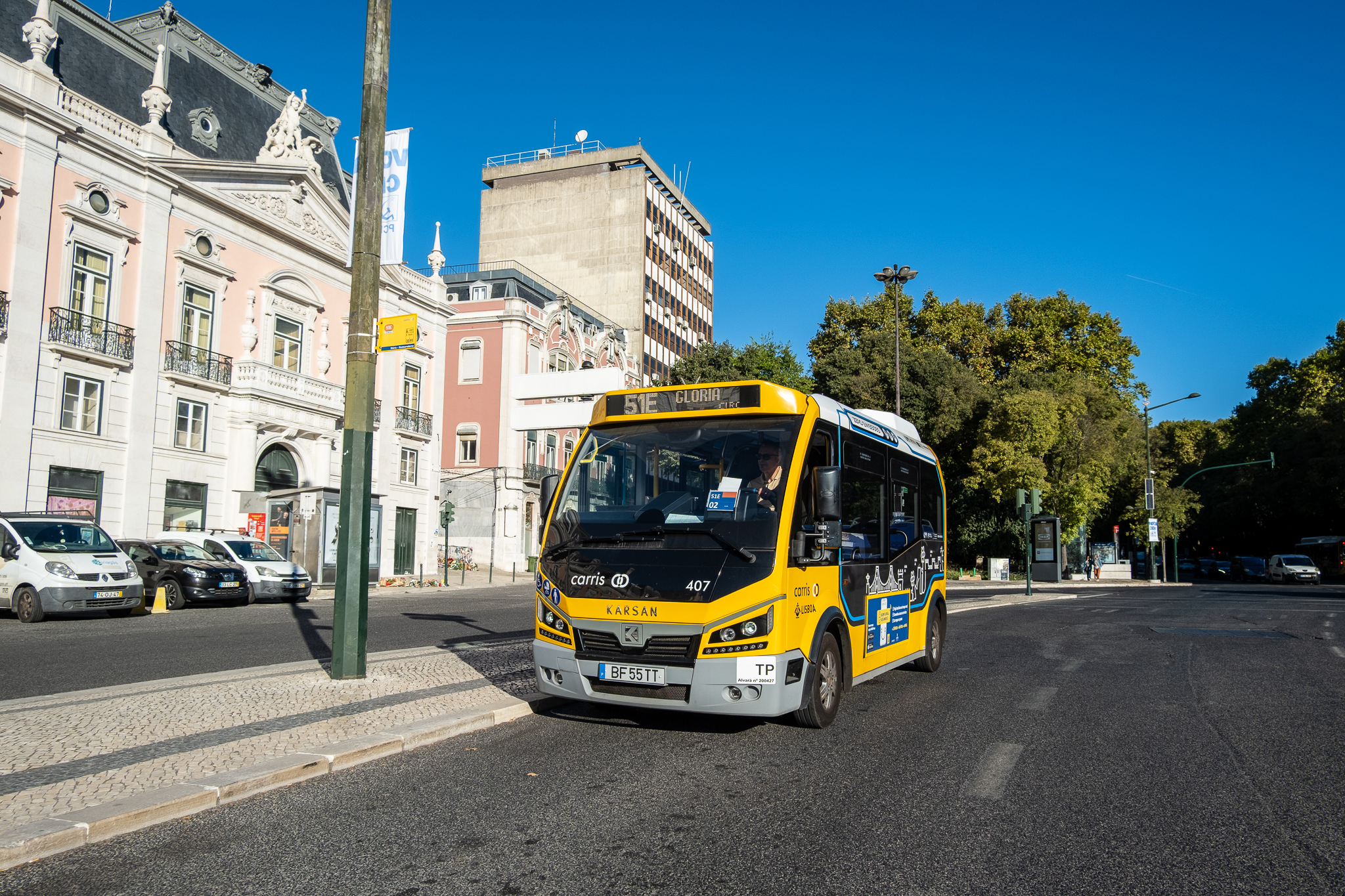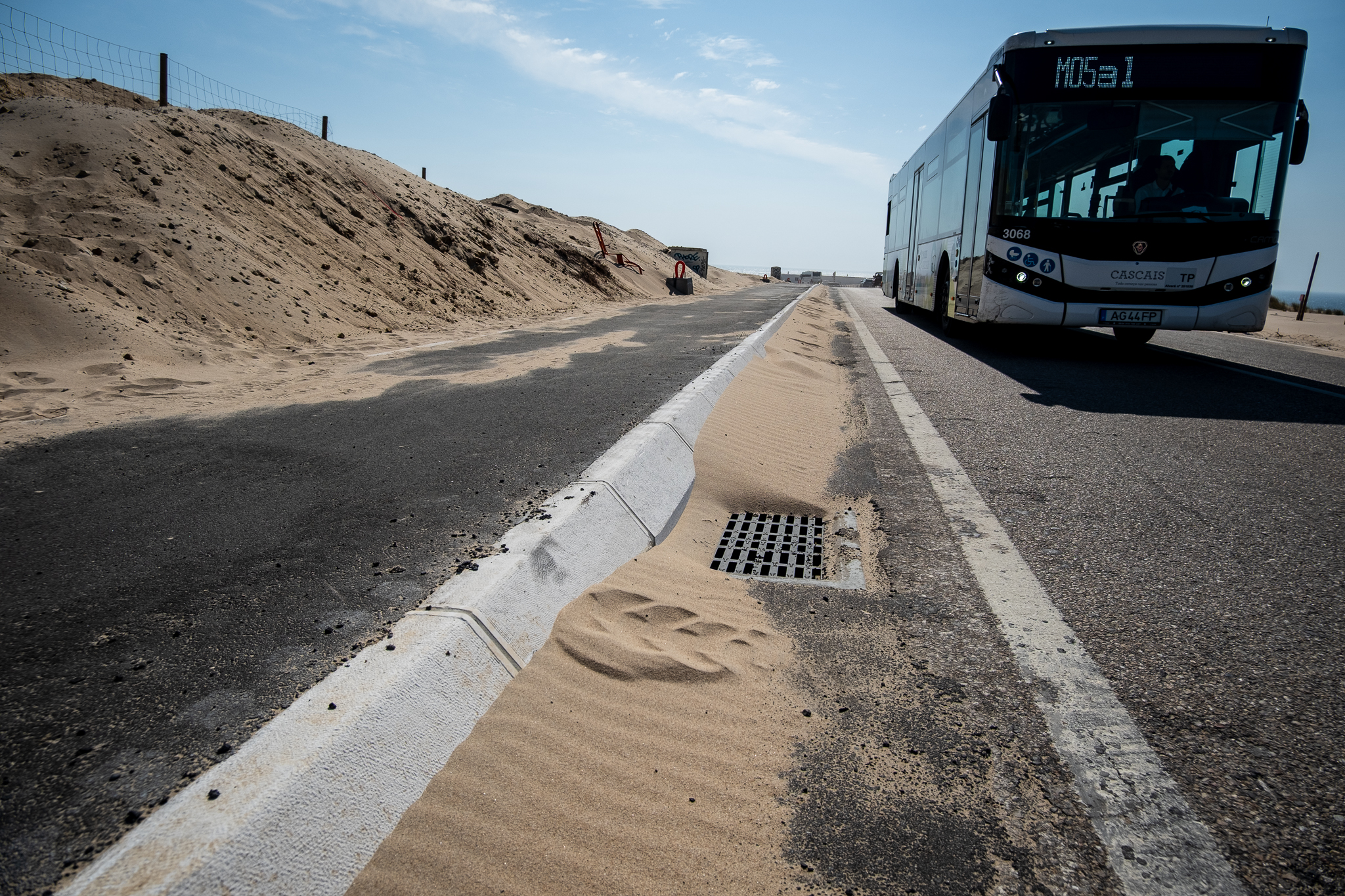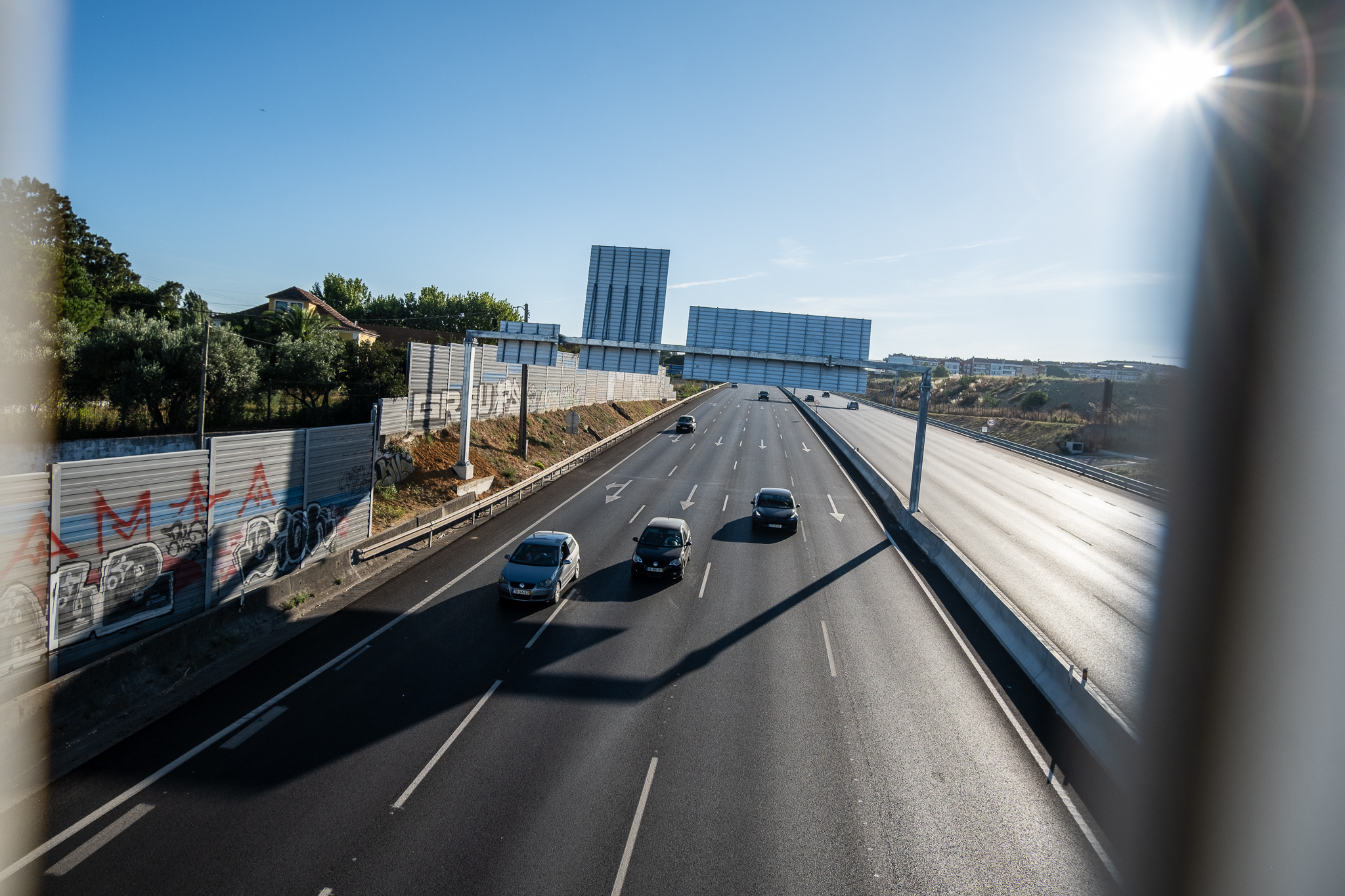Since August, the National Rail Pass has allowed travel on all the country's Regional trains for €49/month. It should soon include InterRegional trains. But does this pass, as it currently stands, serve those traveling to the Lisbon metropolitan area?

In August 2023, a pass valid for any rail journey on national territory, exclusively on Regional category trains, went on sale for €49. These single-class trains provide a service designed for short and medium distances, linking nearby towns with each other and with the main urban centers or stations where the national transport network can be accessed. The service is relatively efficient, in terms of timetables, frequencies, accessibility and journey times.
Without omitting the necessary debate on more frequent timetables, on-board comfort and amenities or on the journey times of the Regional service, both in the amL (Lisbon metropolitan area) and on the rest of the rail network, in recent times it has become increasingly urgent to deepen the conquest that was the intermodal social pass in amL, the Navigatorto simplify access to rail transport for the whole country. However, this proximity is always measured in a relative way and very sparingly because in reality it doesn't reach the entire territory - with a rail service - due to CP's commercial policy.
As for the new National Rail Pass, as it is only valid for the Regional service for the time being, the trains that complement the regional offer on various lines, from Intercity to InterRegional and Urban, are excluded. A good point: at the end of 2023, the Assembly of the Republic voted in favour of including the InterRegionals and some Urbanos and Intercidades in this pass - those that end up providing a more regional service than anything else - in this Pass. In practical terms, when this measure foreseen in the State Budget goes ahead, the National Rail Pass will become more inclusive and the barriers that prevented the full use of rail transport for regional journeys in the overwhelming majority of rail geography will fall.
In this article, we talk about the National Rail Pass as it stands: only for the Regional service. Who might be interested in this pass?
Segmenting trains or fares
For example, on both the Beira Alta and Beira Baixa lines, the "Intercidades" commercial service is part of the regional offer in those territories, stopping at the places with the highest demand.
To the south, on the Alentejo and Sul lines, it is the "Intercidades" and "Alfa Pendular" trains that provide this proximity service, under the "segment the fares but not the trains" modality, in other words, a synergy model in which the same train both offers seats for the long-distance commercial service from Lisbon to Évora/Beja/Algarve and provides seats for proximity traffic on certain routes.
In terms of fares, a monthly subscription is available at a similar price to regional trains and occasional tickets are also priced similarly to regional ones for the same route.
However, the Rail Pass is immune to these synergy freebies and takes everything under the same umbrella: regional is what it's called. So, if you constantly commute between Évora, Cuba, Beja, Alvito, the Sado valley and amL, continue with your modal and fare choice. The National Rail Pass is of no advantage to you. That's not to say that you should lobby and fight for a special scheme for the area where you live! And also more train timetables.
What about amL, where all the categories come together?
At amL, the "Regional" services are grouped into two axes:
- the "Tomarenses" destined for Entroncamento/Tomar;
- and the "West"These are coincident with the areas with the highest population concentration, but with a different offer in both scenarios.
Let's understand them better in the light of the timetable that came into force in December 2023 and the tariff that came into force at the beginning of this year.
Entroncamento/Tomar: the northern line
This is an axis that has long been served by electric triple units with a suburban feel, whose timetables are based on a timetabled system with a terminus at Lisbon's Santa Apolónia station. At Entroncamento, 106 kilometers from Lisbon, most of them connect to Coimbra and, a few times a day, to trains on the Beira Baixa and Leste lines, all of which are in the "Regional" category, i.e. where the new national rail pass is also valid. At weekends and on public holidays, the offer is reduced, losing the timetable, but operating in a network with the above-mentioned links.
So far so good, apart from a couple of (minor) nuances:
- on weekdays, during peak periods, the offer is complemented by trains in the "InterRegional" category on which passes and monthly subscriptions are valid;
- in amL, the "Tomarenses" overlap completely with the "Azambuja" family of CP's "Urban" trains.
In these two cases, while the new pass is not allowed, there are alternatives that allow you to combine it with other passes. We'll see how to do this later.
West: is it to Figueira, to Leiria, to Caldas? is it Regional, Urban or InterRegional?
The Oeste line is almost 200 kilometers long and serves the entire coast of Portugal between the stations of Cacém and Figueira da Foz. Its commercial operating model stabilized at the end of the 1990s, based on an offer to the north of Caldas da Rainha and another to the south of Caldas da Rainha, which relies on the "Urban" trains of the Sintra line.
Since the opening of the Oeste freeway, multiple versions of "Intercidades" and "InterRegional" trains have been tested between Lisbon, Cacém, Figueira da Foz and Coimbra, all of which have unfortunately been unsuccessful because they are neither attractive for long distances nor convincing for regional transport due to the small number of stops.
The primary function of local traffic remains, but the trains that carry out this service are divided into three categories: Regional, InterRegional and Urban, which prevents the advantages of the current National Rail Pass from being widely used on the Western line, in a way that could be said to be similar to that of the Northern line.
That said, there are seven daily "Regional" trains between Caldas da Rainha and Meleças stations. Of these, two continue on to Lisbon (Santa Apolónia), while the other five trains require an "Urban" train at Meleças, which serves all the stations and stops on the Sintra line up to Rossio central station.
From Caldas da Rainha to the north, by direction, there are three "Regional" trains to Leiria, of which one goes to Figueira da Foz and another to Coimbra-B and, most of the time, the southbound train continues north and vice versa. Dividing the number of trains in Caldas da Rainha takes care of those technical situations where rolling stock is rotated or refueling is required, so in these cases, the trains have to be changed.
In addition, but not yet available to current National Rail Pass holders, from Caldas da Rainha to Coimbra there are three "InterRegional" trains per direction. On the south side, between Caldas da Rainha and Lisbon, there is one "InterRegional" train per direction. While in the north, the InterRegional offer exists because of the advantage of offering a set of trains in "accelerated running", on the south side it is a recent re-categorization of a "Regional" train, the most visible practical effect of which has been to increase the cost of the ticket. This decision, which has no practical effect on the quality of service, is a barrier to fare accessibility for the new pass, but also for the occasional ticket: this "InterRegional" train continues to Coimbra-B with the "Regional" category, forcing passengers passing through Caldas da Rainha to buy two tickets with the corresponding fare penalty.
Confused? Just a little bit more, we're almost at Figueira da Foz. It may be that even before I get there and have to count so many different types of passes and types of trains, there will be news about the inclusion of InterRegional trains in the new national rail pass, making everything easier and more accessible.
This northernmost section of the Oeste line is part of Coimbra's urban train system, with its own fare system where the new rail pass is not valid. As the commercial rail system is as rigid as it is flexible, on this stretch of urban trains there is the Regional train from Caldas da Rainha to Coimbra-B (leaving at 7pm and returning at 5am) and the train from Caldas da Rainha to Figueira da Foz (leaving at 2pm and returning at 5pm).
Have you put everything on the table, or in your suitcase, are you still with us on this troubled journey along the Western line?
Outside of these lines and words, it's much simpler in practice: unless you've been told and honored, as long as the new national rail pass doesn't allow you to travel on the InteRegionais, Urbanos de Lisboa and Urbanos de Coimbra, it doesn't give you an advantage on the Oeste line and, therefore, if you buy the new national rail pass for the Oeste line, you'll certainly always be shelling out change for tickets! The current kilometer-based subscriptions are more advantageous and if you travel on the amL always combine them with the intermodal social pass Metropolitan Navigator.

Still, I live near the Western line and I want to take advantage of the national rail pass. Can I be creative?
Given the creativity of this operating model, an inhabitant of a town served by the Oeste line who wants to use this Pass to get to Lisbon has to aim for the only two "Regional" trains that do: either the one that arrives in Lisbon at 3pm or the one that arrives at 9pm. In the opposite direction, to leave Lisbon, the choice is always made before lunch: either at 5 o'clock or 11 o'clock. As with other fare models, traveling out of hours has advantages for the price of the ticket: but be careful! If you get to Lisbon for free, you have to pay to get back.
Therefore, in order to use the Oeste line on the section within amL, the pass must be Metropolitan Navigator allows for more choices. For €40, you have access to the entire offer (Urban, Regional and InterRegional) between Lisbon, Meleças, Malveira and Jerumelo. For a further 49 € you have access to the rest of the Oeste line as far as Figueira da Foz or Coimbra, but subject to the timetables of the "Regional" trains.
For use of the Oeste line, exclusively outside amL, there are 518 possible combinations of journeys to make in order to use the National Rail Pass, already discounting those that have been excluded because they belong to Urbanos de Coimbra. Of the 518, the 71 possibilities below €49 per month are excluded, meaning that there are 447 origin/destination pairs whose monthly subscription is higher than that of the National Rail Pass.
When we take into account the youth discount on monthly subscriptions, there are 413 origin/destination pairs where this Pass can give an advantage over monthly subscriptions for young people. However, this figure alone does not guarantee a price reduction, because above Caldas da Rainha, InterRegional trains make up half of the offer and above Leiria they make up the majority of the offer.
For example, the following two cases show the importance of including InterRegional and Urban trains in the National Rail Pass. Currently, for passengers on the Oeste line who opt for this Pass, the difference in cost is paid by the passengers themselves, who are forced to buy single journeys to use those trains excluded from the pass, despite their function as regional transport. For the majority of cases, the current monthly subscription ends up being more advantageous in terms of price, which means that passengers on the Oeste line end up being left out of the dynamic of advantages that the National Rail Pass entails, which include using the train outside of everyday needs and enjoying a comfortable means of transport for journeys outside of daily commuting, allowing them to discover the region or reunite with family and friends, with significant savings for the wallet and the environment.
The examples focus on the routes between Leiria and Figueira da Foz, and between Leiria and Caldas da Rainha, a summary of which can be found in the table below:
| Route | No. of trains (per direction) | Monthly subscription (for all trains) | No. of R trains (per direction) | Travel price (One way) in IR | PFN + IR tickets in 22 working days | Does the NFP allow savings? |
|---|---|---|---|---|---|---|
| Leiria - Figueira da Foz | 5 | 124,90 € | 1 | 5,95 € | 179,90 € | No. Over the course of the working month, it entails 55 € of additional expenditure |
| Leiria - Caldas da Rainha | 6 | 127,60 € | 3 | 6,20 € | 185,40 € | Yes, if the InterRegional train is used a maximum of 12 times a month; if it is used 22 times during the working month, this entails an additional €57.80 |
In the first exampleThe monthly subscription for the Leiria to Figueira da Foz train costs €124.90 and is valid for the five timetables between the two cities. The 49 € pass is actually cheaper, but it only allows you to travel on one train: the 15h11 from Leiria to Figueira and back at 17h17. Each InterRegional trip from Leiria to Figueira costs €5.95. All told, for those who opt for the National Rail Pass, on the 22 working days that they leave Leiria for Figueira on the 06:58 InterRegional and return on the 17:17 Regional, they will incur a total cost of 179.90 €, which is 55 € above the monthly subscription price for the route in question! So, without making a big mistake, it can be said that above Leiria this pass is of no interest: these additional 55 € don't pay for the possible journeys you might make outside your daily routine "to take advantage of the pass".
In the second exampleThere are already six Regional trains between Leiria and Caldas da Rainha: 06h23, 12h13 and 18h13 from Leiria to the south and 08h30, 14h20 and 19h06 from Caldas da Rainha to Leiria. The monthly subscription between the two cities costs €127.20 and the InterRegional trip costs €6.20. In this case, the National Rail Pass would only represent a saving if you used the InterRegional up to a maximum of 12 journeys a month. In this case, the Pase can be an advantage, as long as you consider that the extra value of the InterRegional journeys you'll have to buy will end up paying for the other Regional train journeys you'll make in your spare time outside your usual route, which in this case is between Leiria and Caldas da Rainha.
Shall we do the math? To the 49 € of the National Rail Pass, add the 12 InterRegional journeys (74.40 €) and that's 123.40 €. The monthly subscription, remember, is €127.20. For the savings to work, make sure you don't make more than 12 InterRegional journeys. But if you do, remember that with the National Rail Pass you can always travel to any destination on the Regional train network, such as taking a Regional from Caldas da Rainha to the south without paying extra.
What should we do then? Take the opportunity to visit Torres Vedras. Or Roliça, getting off at the São Mamede stop and walking a little in a westerly direction. You'll certainly find ways to make the most of the pass, combining the enjoyment of nature and heritage in your region.
Everything will be different when the InterRegionals become part of the National Rail Pass
These calculations no longer make sense and, at that point, with a single pass you'll be able to travel on all the trains between Meleças and Figueira da Foz, or Coimbra. At that point, if you travel between Leiria and Figueira da Foz every day, the €49 National Rail Pass will replace the monthly subscription of €124.90. And if you travel between Leiria and Caldas da Rainha, you'll be able to pay for a 49 € pass instead of the current 127.20 € subscription, which requires you to buy a ticket every time you want to travel to Bombarral or Torres Vedras.
A different scenario is between Caldas da Rainha and Meleças, where most of the offer is on Regional trains. On this stretch, there are 210 possibilities for monthly subscriptions and within amL all subscriptions have a higher value than the one offered by amL. Navigator.
There are four exceptions arising from the dual tariffs between monomodal and intermodal: if the monthly commute takes place exclusively between Pedra Furada and one of the three stops in the municipality of Mafra (Mafra Gare, Malveira and Jerumelo) or exclusively between Sabugo and Mafra Gare and without the need for any other transportation. Although they are worth what they are, they have to be written down so that there are no hidden bills and without this meaning that in the next tariff update they will remain as they are today.
So, having made the parenthesis for the introduction of this exception for these four very particular routes, we can say that the answer within amL is obvious: Navigator.
There are several routes on this southern part of the Oeste line that you can now take advantage of with the National Rail Pass, since only two of the trains are InterRegional - one per direction. With a value of more than €49, there are, for example, signatures between Malveira and Torres Vedras - €67.10 - on which there are savings with the Pass if you don't make more than five InterRegional journeys (count them well, don't let yourself run into losses). Also between Dois Portos and Bombarral - €80.30 - you'll save with the Pass if you don't make more than seven InterRegional journeys (at the eighth you'll lose money, so be careful!). On the other hand, between Bombarral and Caldas da Rainha - €50.60 - just one InterRegional trip already falls outside the savings allowed by the new pass.
One caveat, though. A caveat, yes, for going to the beach! In the latter case, the youth subscription valid for all trains costs €37.95, but between Bombarral and São Martinho do Porto the youth subscription costs €56.45. For students from Bombarral, the National Rail Pass doesn't pay to go to classes in Caldas, but it can pay to go to the beach: leave Bombarral at 7.46am or 1.54pm and then return at 12.56pm or 6.54pm. Time to go to the shell.
In a nutshellFor all cases south of Caldas da Rainha, you just have to avoid the train that leaves Lisbon at 4:53pm and the one that leaves Caldas da Rainha at 6:21am, which are the "InterRegional" trains. In the case of amL, the inclusion of the InterRegional and Urban trains in the new national rail pass makes it possible to equalize the advantages of the rail pass for passengers on the Oeste line with those that passengers on the Norte line already had, not for any infrastructural reason but above all because the regulations for the new national rail pass were out of step with CP's policy of offering commercial services.

And in the current passing combinations, how can I take advantage?
Currently, the intermodal social pass - Metropolitan Navigator - costs 40 € and is valid for the whole of amL and for all modes of transport. For an extra €0.50, passengers can get their pass valid on the CP as far as Azambuja (Azambuja Complex).
In the case of the Oeste line, a resident of Caldas da Rainha, Bombarral or Torres Vedras who wants to reach some point on the amL and use the train frequently, pays as, until now, the Metropolitan Navigator plus a subscription between Malveira (note that the InterRegional doesn't stop at the Jerumelo station, which forms the boundary of the amL) and its final destination. The math is easy: for those who use the InterRegional, they need to continue buying the Metropolitan Navigator (40 €) plus the cost of the ticket between Malveira and its destination:
- 67.10 € for Torres Vedras,
- 114.15 € for Bombarral,
- 147.80 € for Caldas da Rainha.
For those who use the Regional exclusively, on their way to and from amL, it pays to buy the National Rail Pass in addition to the National Rail Pass. Metropolitan Navigator. Something good is finally in the news!
But beware. There are exceptions that allow you to save some money: if your destination is Sapataria, Pêro Negro, Zibreira, Feliteira or Dois Portos, subscriptions cost less than 49 € and you don't need the National Rail Pass. This way, to use most of the rail services between Caldas da Rainha and Lisbon, the cost of the passes drops from €187.80 to €89. The timetables are, departing from Caldas:
- 5h20 to get to Rossio at 8am;
- 7h25 to get to Rossio at 10am;
- 11h16 to get to Rossio at 2pm;
- 13h16 straight to Santa Apolónia! Arrives at 15:41;
- 16h16 to get to Rossio at 7pm;
- 17h35 to get to Rossio at 8pm;
- 19h23 direct to Santa Apolónia, arriving at 21h43.
In other words, valid for all journeys except the InterRegional train departing at 6:21 am from Caldas da Rainha to Lisbon (Santa Apolónia), where it is scheduled to arrive at 08:30 am. At the time of writing, InterRegional trains are only expected to be included in the first half of 2024. However, there are no plans to include the Urbanos de Lisboa, which means that given CP's strategic option to make Meleças station the terminus of the Oeste line trains, buying the pass Navigator to reach Lisbon will always be necessary. While on the Northern line, the €49 monthly National Rail Pass is enough to get to Lisbon, with hourly trains, on the Western line you'll need a €89 monthly pass, choose one of the 8 trains with transfer times in Meleças that are around 30 minutes and also do the math for the last trains of the day: 19h23 from Caldas to Lisbon and 19h30 from Meleças to Caldas!
I'm from the West: is there anything else I need to know?
Just to remind you: let's face it, the €80 Rodoviária do Oeste pass with Carris and Metro in Lisbon is a more attractive option for most journeys to Lisbon. This discrimination against the West trains is in addition to the historical discrimination for the lack of direct services to Lisbon's Rossio station, or for the lack of a timetabled service, or for the lack of stations and stops where passengers feel welcome and informed about the state of traffic.
Even with this price reduction, the Oeste line is still a long way from being able to offer quality access to Lisbon. And even when it comes to using the trains on the Oeste line, the new pass doesn't bring any exciting new features: practically everything remains the same, but with a poster advertising the new national rail pass.
Are those who use the Regional service on the Northern line better off with the new pass?
On working days, only two InterRegional trains arrive in Lisbon and another two leave. Every hour there are Regional trains to Santarém and Entroncamento, many of which continue to Tomar and have connections to Coimbra, Beira Baixa and the East.
The math to find out which combination is the most advantageous is always too personalized, not only because of the student discount, but also because, in all likelihood, to get to Lisbon, you would combine a monthly subscription to the CP train to Vila Franca de Xira with the Metropolitan NavigatorThis is the cheapest option and gives you access to the Regional and InterRegional trains plus all transportation within the Lisbon metropolitan area. Alternatively, you can also opt for the combination of the monthly CP subscription to Azambuja, with the Metropolitan Navigator and the Azambuja ComplexThis gives an even greater advantage, but only allows the use of trains that stop at Azambuja, which still make up the majority.
Prices vary and those who board at the Virtudes, Reguengo or Setil stations - the first stops after Azambuja, where the Azambuja Complex do Navegante - to Lisbon you spend 75.40 €, a price that increases as the distance increases. Focusing on the section to Santarém, this combination of passes has prices ranging from €75.40 from Virtudes to €144.55 from Santarém, which allows you to use any Regional or InterRegional train, depending on whether they stop.
| Origin | Regionals Tour [1] | Travel in all Regionals and InterRegionals [2] |
|---|---|---|
| Virtues (ap.) | 75,40 € | N/A |
| Reguengo (ap.) | 75,40 € | 103,65 € (a) |
| Setil | 75,40 € | N/A |
| Santana-Cartaxo (ap.) | 82,30 € | N/A |
| Vale de Santarém (ap.) | 94,55 € | N/A |
| Santarém | 111,05 € (b) | 144,55 € (c) |
Some notes: [a] Currently, the Reguengo station is served by an IR in each direction from Monday to Friday, except on official holidays; [b] except for Regional trains 5600 and 5416 which do not stop at Azambuja. This case is the same as for InterRegional trains: you must buy the combination pass up to Vila Franca de Xira; [c] Compared to the option on the left, this pass, which costs 33.50 euros more, allows you to travel on trains 920, 922, 5600, 5416 and 820 between Santarém and Lisbon and on trains 5601, 921 and 923 between Lisbon and Santarém.
With the National Rail Pass, that monthly cost drops to 49 € if you're coming from Regional to a Lisbon station and don't need any other transportation. In that case, the choice is quite obvious: you save with the Pass. The savings are different if you have to use other transport in Lisbon and/or if your routine involves using InterRegional or Regional trains that don't stop at Azambuja. These are small nuances that can cause you inconvenience during your commute and which we'll analyze below.
If I use other transportation in Lisbon, what options do I have? You can choose a monthly subscription from your origin and combine it with a Lisbon city pass. You have four options: Metropolitan Navigator from Azambuja (€40.50) or Vila Franca de Xira (€40), the Navegante Lisboa (€30) or a monthly subscription for 1 zone of CP Lisboa (€29.15). Let's exclude the latter, because for an extra 85 cents a month, you have access to all the city's transport, not just the train.
The sum is easy: for 49 of one pass plus 30 of the other, you can reach Lisbon and ride all the city's transport for 79 € a month What are the restrictions? The only restrictions are that you can't use the two InterRegionals that run in each direction on weekdays or the one that runs late on Sunday afternoons to get to Lisbon.
But then, isn't combining the current monthly subscriptions cheaper?
The option of combining the €40.50 of the Metropolitan Navigator with Azambuja ComplexThe price of the monthly subscription to your destination is an advantage whenever the sum is less than the 79 € proposed above. For exclusive use of the Regionais, this is true for Virtudes, Reguengo and Setil, where the price is 75.40 €, but for the next stop, Santana-Cartaxo, it's 81.30 € and for the next, Vale de Santarém, 94.55 €. From now on, it's always going up!
In the case of the cheapest combination - passengers from Virtudes, Reguengo and Setil, it's up to you! - which, let's remember, costs €75.40 and allows you to travel on all the Urban and Regional trains on that route alone, will end up excluding the rest of the country's "Regional" train network. The question remains: is this saving worth it, or for an extra €3.60 a month wouldn't you like to have a Pass that would allow you to go to, for example, Santarém without paying for another ticket? Or, for an extra €13.60 a month, do you have practically unlimited possibilities to use the amL public transport network and the Regional trains throughout the country?
What about from Santarém to Lisbon, as long as the National Rail Pass isn't valid on the InterRegionals? If I buy a Pass, how many IR journeys can I make without destroying my savings? For example, if you come from Santarém to Lisbon, you have the following options:
- 49 € - only Regional trains and if you don't need any other transport on arrival at Oriente or Santa Apolónia;
- 79 € - Regional trains only, plus all transportation within the city of Lisbon;
- 89 € - Regional trains only, plus all amL transport;
- 144,55 € - all Regional and InterRegional trains and access to all transport in the Lisbon metropolitan area, with the subscription between Santarém and Vila Franca de Xira, plus the pass Metropolitan Navigator.
That said, if you opt for the National Rail Pass for your journeys from Santarém to Lisbon, using the capital's transport, you're saving €65!
We're guessing that sometimes you'll need to use the InterRegional offer from Santarém to Lisbon. In that case, you'll be able to travel eight times without ruining your savings (eight InterRegional journeys cost €63.60) and you'll also get a pass that allows you to travel in your spare time from Santarém to Abrantes, Tomar, Elvas, Castelo Branco, Coimbra, Aveiro or any other destination in between, as many times as you like.
See if you can avoid the InterRegionals, because the savings are too great: on weekdays they leave from Santarém for Lisbon at 6:47 and 7:33, on Sundays one leaves at 22:58 and from Lisbon they leave on weekdays at 17:15 and 18:15. As long as you avoid those, you're always saving and you can (re)discover other destinations without paying extra.
What practical calculations can I make to save money and be able to ride these Regionals on the Northern, Beira Baixa and Eastern lines?
Roughly speaking, if you come to Lisbon and only use the Regionals, you'll always win with the National Rail Pass: with 49 euros a month you'll have your affairs taken care of and hundreds of kilometers to discover in your free time. But if your destination is far from Oriente or Santa Apolónia stations, and your origin is any station or station above Setil, you can save money by combining it with the Navegante Municipal from Lisbon (30 €), in other words, for 79 € you can take any Regional to Lisbon and then any transport within the capital. Note that the analysis is made more sensitive by the multiple combinations that can be made, plus the discounts for young people and students on subscriptions and monthly passes.
In any case, it's worth remembering that you can buy one combination one month and another the next. And go back to the previous one whenever you need to because, for good reason, the features of the National Rail Pass that cause these restrictions on daily timetables end up being very useful in leisure time, or even on weekend trips to reunite with family: traveling all over the country on Regional trains with the Pass you use to go to school, college or work is something you can save money on. Let's remember this again: it's especially valid for journeys centered on the Northern line, for distances of up to, roughly, 200 km, where the "Regional" offer is frequent, relatively fast and with a wide timetable! With the help of weekend trains. You're a teacher at a school in Lisbon and every weekend you go to your family in Pombal? The National Rail Pass will certainly help you get around and save you a lot of money: €42.80 in a month.
In the case of the Oeste line, the benefits will be felt above all when the InterRegional, Coimbra Urban and Lisbon Urban trains are included in this National Rail Pass, reducing those small barriers that - in the end - constitute major difficulties in accessing the rail service and enjoying this mode of transport without significant differences in the quality of the service provided in one region and another. And this is what it's all about, in particular. Given that this is the first step, it is important to deepen it towards a proximity rail service that is easy and intuitive to use. In addition to the differences in the rolling stock used, the quality of the infrastructure, the speed of the services or their frequency, the National Rail Pass has made the differences in the service provided more obvious.








